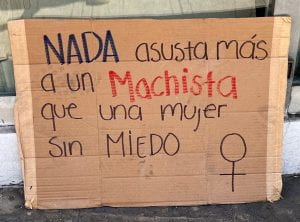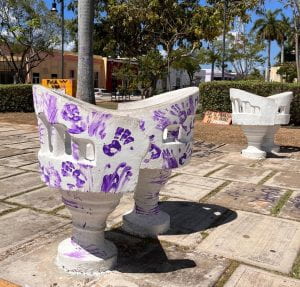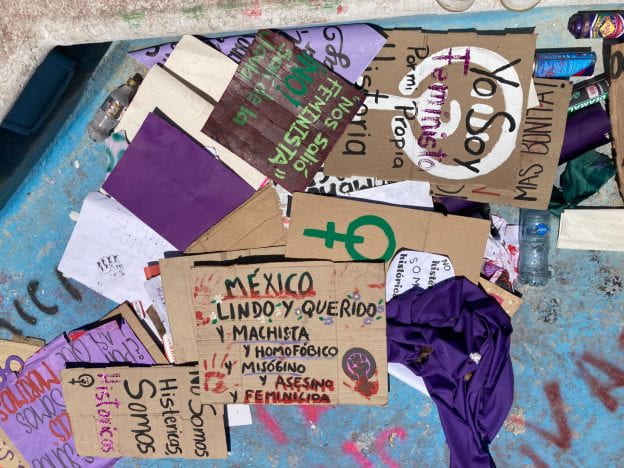TW: non-graphic mention of sexual and gender-based violence

“Nothing is scarier to a sexist man than a woman without fear.”
When you google “Women’s Day Mexico,” one of the first headlines is: “Tens of thousands of women protest ‘femicide,’ gender based violence” (The Washington Post) whereas “Women’s Day USA,” brings up “Celebrating Women’s Day,” (US State Department). The difference between femicide and celebration is quite telling.
As International Women’s month comes to an end, I want to take a second to write about the powerful ways in which this holiday is acknowledged in Mérida, Mexico. I grew up in the United States knowing March 8th as the day in which we celebrate women’s achievements and tell the women in our lives how much they mean to us. While that certainly also happens here, Women’s Day in Mexico is not a celebratory event. It is a day of commemoration of all those oppressed by the patriarchy. It is a demand for revolutionary change.
In Mexico, Women’s Day is a day of protests demanding an end to the endemic feminicide*, domestic and sexual abuse and violence against women and gender-oppressed people. During the peaceful protest the evening of March 8th, el Centro de Mérida was packed with predominantly young women and people dressed in green and purple** carrying spray paint, insisting immediate change be made for the rights of women in their country.

Main statue in Parque Santa Ana coated in slogans and posters left by the march the previous day.
As the sea of green and purple began to dissipate, their presence certainly did not. Parks, squares and statues across el Centro were dripping with paint and posters demanding change. The slogans and posters sported a diverse array of material, some detailing womens’ personal experiences, many with inspirational phrases, and some calling out specific organizations and individuals for their sexism. Perpetrators’ names were scrawled across sidewalks, walls and benches. There was a line strung across the entirety of Parque Santa Ana holding posters of the faces and names of men who have committed gender-based violence, exposing them and their crimes to the world.
I had never seen anything like it. Though I have attended many a political protest, never had I seen one so directly spotlighting the oppressors. It was powerful to see their names rewritten by women – scrawled across the city in vibrant purple and green spray paint, tainting the beautiful buildings and pristine imagen Mérida wants to be perceived as. The now green-and-purple-streaked Mérida is a reminder for us all to look within ourselves and examine the harmful roles we play in perpetuating oppressive systems and begin to take action to challenge our privilege and use it to dismantle all unjust systems.

The famous “silla confidentes,” found around Mérida Centro smeared with purple handprints representing violence against women.
*femicide: femicide is a term combining the words “feminine” and “genocide,” used to describe the intentional murder of women and gender-oppressed people because of their gender. Feminists in Mexico were some of the first to adopt the term “feminicide,” in reference to the unconscionable murders of women in and girls in Ciudad Juarez, along the US/Mexico border.
**The colors green and purple are now recognized as women’s empowerment colors internationally. They were originally given meaning by the British Women’s Social and Political Union (WSPU), a militant wing of the British suffrage movement. The green represents hope and the purple signifies dignity and justice.

Powerful message.